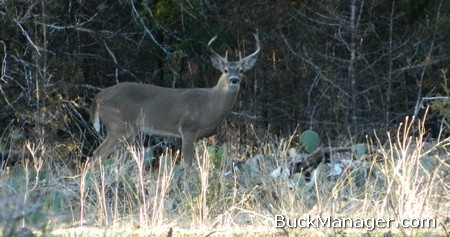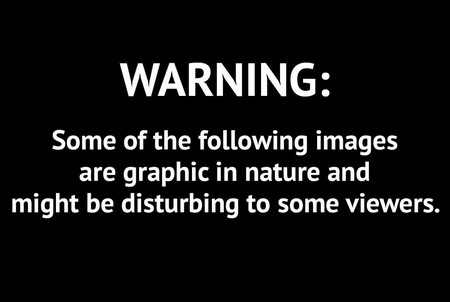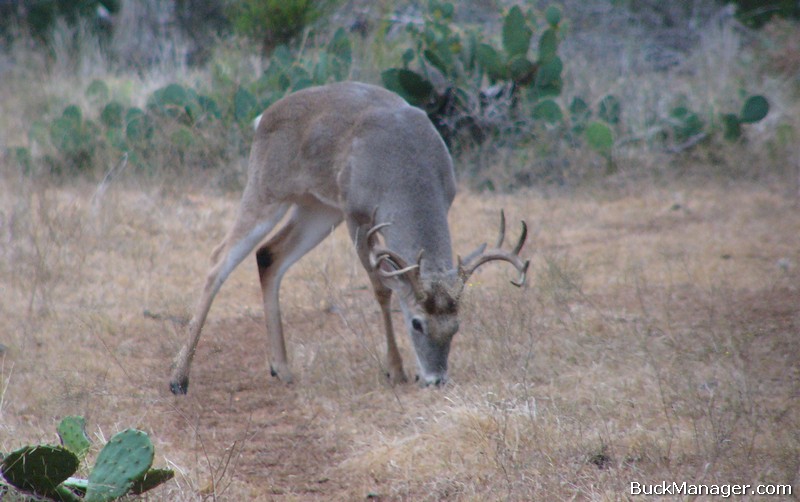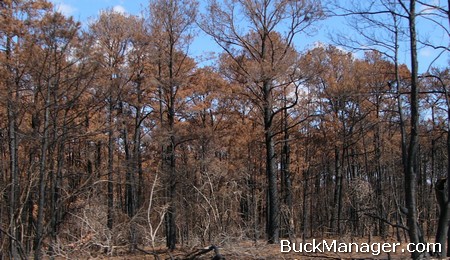The white-tailed deer hunting season will be ending shortly, so there’s no better time than right now to employ a few late season deer hunting tips and tactics to bag that last-second buck. In Texas, many hunters take time off between Christmas and New Year’s in anticipation of putting deer on the ground, but whitetail bucks that have made it this far into the deer hunting season are well educated.
Still, there’s no need to panic. Careful planning combined with the wise use of time in the field can still result in a successful deer hunt later in the season, but let’s discuss some of the things you need to know to up your chances. Hopefully, these tips will tip the odds in your favor.

The Late Season: Deer Know
The hunting season has been on for a while and the deer are most definitely in the know. Patterns are extremely important to them. Not so much their patterns, but the patterns of hunters. A deer knows that the sound of a four wheeler running or a truck door closing means a hunter is in the area. Deer will stick with moving very early, before sunrise, and then after mid-morning, when most hunters have long left the field. It’s time to change things up. First, be quiet.
Next, be flexible. By late season, even young deer realize that bad things can happen to good deer that hang out too close to deer stands and deer feeders. Older deer will be on full alert and will avoid all of them. Instead of jumping into your stand out of habit, find a travel corridor and catch whitetail moving around your setup. Deer move even when you are not seeing them from your stand, they just know how to avoid the average hunter by late season. Deer will not expect you to be somewhere else, out of your stand. Put the wind in your favor and you will see deer.
Use Late Season Feeding to Pattern Deer
Another great late season deer hunting tip is to watch the moon. Deer naturally become more nocturnal, feeding during the night, as temperatures drop into the fall and winter, but their nightly movements are greatly reduced during the dark of the moon. Avoid full moon periods and stick with hunting the days around a new moon. This hunting tactic will also work in between nights that are hampered with heavy cloud cover. Whitetail will hold tight overnight, so be in the woods when daylight comes, especially when these conditions coincide with really cold temperatures.
This next hunting tip is a no-brainer, but it works. Look for deer foods. As mentioned previously, deer do not stop traveling altogether, but their movements will be modified late into the deer hunting season. Hunt food sources such as cool season forbs, winter food plots, or even deer feeders at non-traditional times. Whitetail deer have to move and eat more as the mercury drops, so find a food source and camp out on between late morning and early afternoon.
Weather for Late Season Hunting Success
A last, but often overlooked, deer hunting tip is to pay attention to the wind speed. Many deer hunters pay attention to wind direction, and rightfully so, but wind speed alone can dictate deer movement. High wind speeds (more than 15 mph) make for difficult hunting conditions and deer do not like to move during these times either. Whitetail deer are nervous creatures already, so high winds and lots of moving limbs do not help. High wind inhibits their ability to detect danger, so deer movement will be greatly suppressed.
Use a weather web site such as AccuWeather.com to get hour-by-hour temperature and wind direction and speed information for your hunting area. It may be the late season, but there is still plenty of deer hunting to be had. Find time to use these deer hunting tips and tactics in combination before the end of the season and the odds will be in your favor. Happy holiday hunting!



